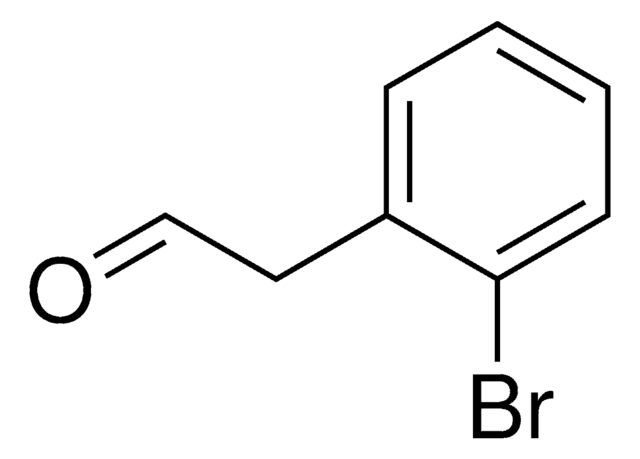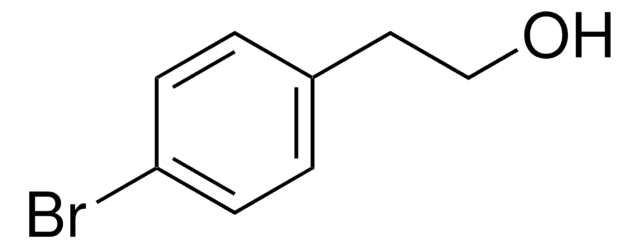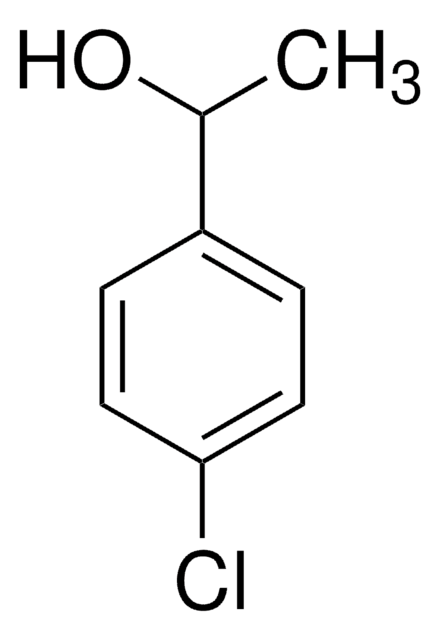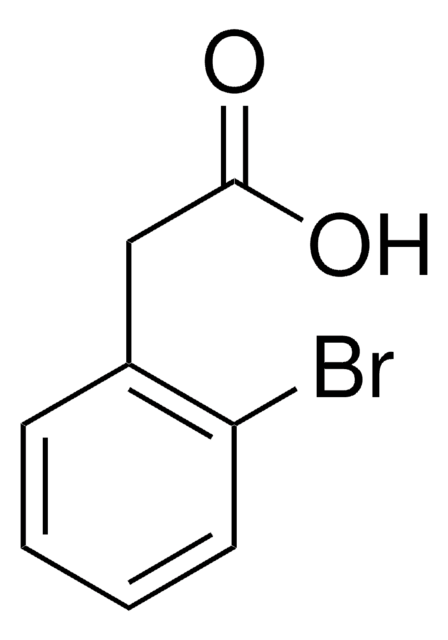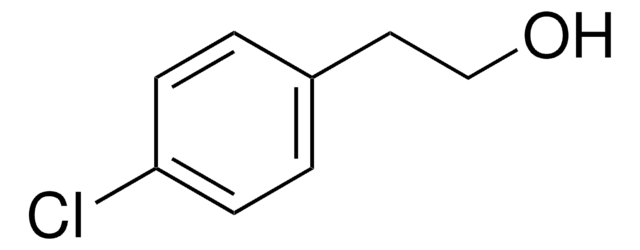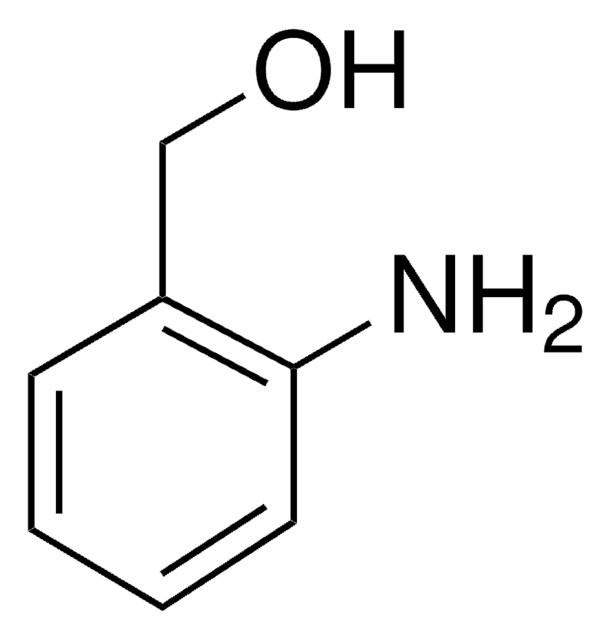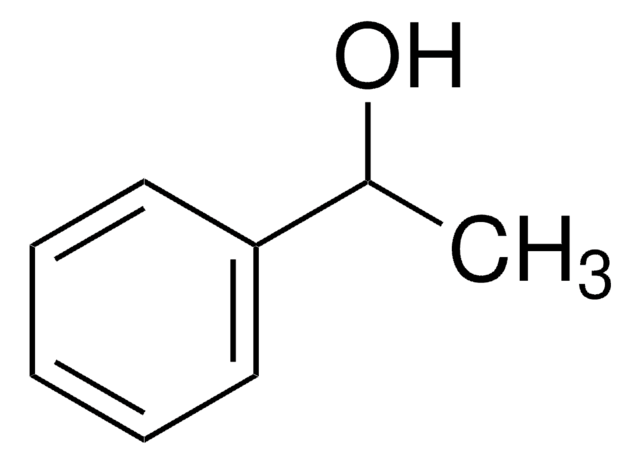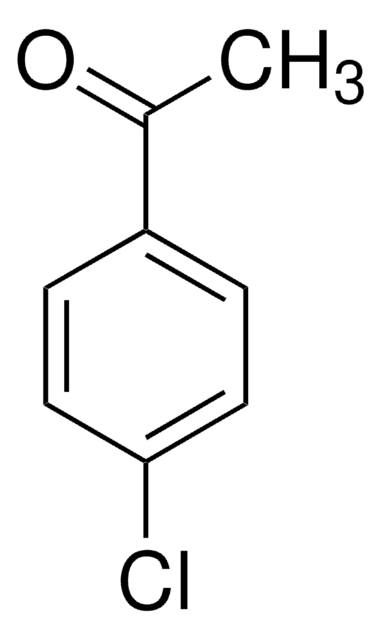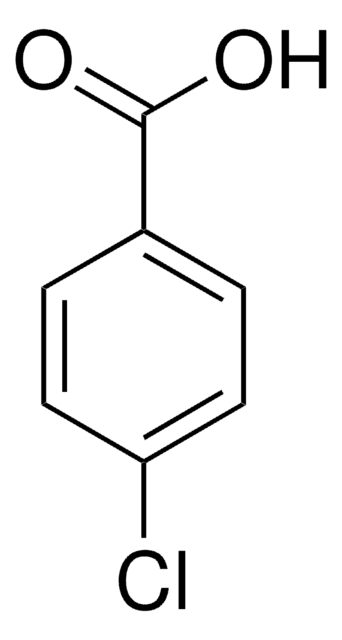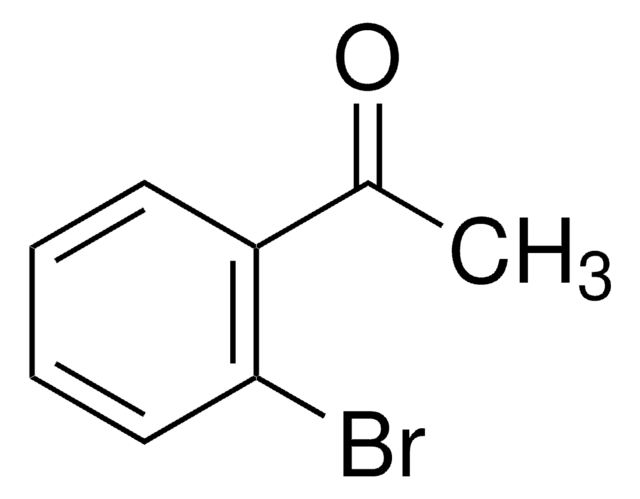394548
2-Bromophenethyl alcohol
99%
Se connecterpour consulter vos tarifs contractuels et ceux de votre entreprise/organisme
About This Item
Formule linéaire :
BrC6H4CH2CH2OH
Numéro CAS:
Poids moléculaire :
201.06
Numéro MDL:
Code UNSPSC :
12352100
ID de substance PubChem :
Nomenclature NACRES :
NA.22
Produits recommandés
Niveau de qualité
Essai
99%
Indice de réfraction
n20/D 1.577 (lit.)
pb
97 °C/0.7 mmHg (lit.)
Densité
1.483 g/mL at 25 °C (lit.)
Groupe fonctionnel
bromo
hydroxyl
Chaîne SMILES
OCCc1ccccc1Br
InChI
1S/C8H9BrO/c9-8-4-2-1-3-7(8)5-6-10/h1-4,10H,5-6H2
Clé InChI
ADLOWZRDUHSVRU-UHFFFAOYSA-N
Catégories apparentées
Description générale
2-Bromophenethyl alcohol is a phenethyl alcohol derivative. It participates in the preparation of novel P-chirogenic phosphines with a sulfur-chelating arm (P*,S-hybrid ligand).
Application
2-Bromophenethyl alcohol is used as an end capping reagent during the synthesis of rod-coil block copolymers and also as a test compound in the study to evaluate the potential Aedes aegypti repellent chemotype.
Code de la classe de stockage
10 - Combustible liquids
Classe de danger pour l'eau (WGK)
WGK 3
Point d'éclair (°F)
Not applicable
Point d'éclair (°C)
Not applicable
Équipement de protection individuelle
Eyeshields, Gloves
Faites votre choix parmi les versions les plus récentes :
Déjà en possession de ce produit ?
Retrouvez la documentation relative aux produits que vous avez récemment achetés dans la Bibliothèque de documents.
Les clients ont également consulté
Polina V Oliferenko et al.
PloS one, 8(9), e64547-e64547 (2013-09-17)
Molecular field topology analysis, scaffold hopping, and molecular docking were used as complementary computational tools for the design of repellents for Aedes aegypti, the insect vector for yellow fever, chikungunya, and dengue fever. A large number of analogues were evaluated
Modular P-Chirogenic Phosphine-Sulfide Ligands: Clear Evidence for Both Electronic Effect and P-Chirality Driving Enantioselectivity in Palladium-Catalyzed Allylations.
Bayardon J, et al.
Organometallics, 34(17), 4340-4358 (2015)
Wen-Chung Wu et al.
Langmuir : the ACS journal of surfaces and colloids, 23(5), 2805-2814 (2007-01-26)
A combined theoretical and experimental investigation of conjugated rod-coil block copolymer brushes is reported. The theoretical study for the surface structures of rod-coil block copolymer brushes was established based on the simulation method of dissipative particle dynamics. The effects of
Notre équipe de scientifiques dispose d'une expérience dans tous les secteurs de la recherche, notamment en sciences de la vie, science des matériaux, synthèse chimique, chromatographie, analyse et dans de nombreux autres domaines..
Contacter notre Service technique